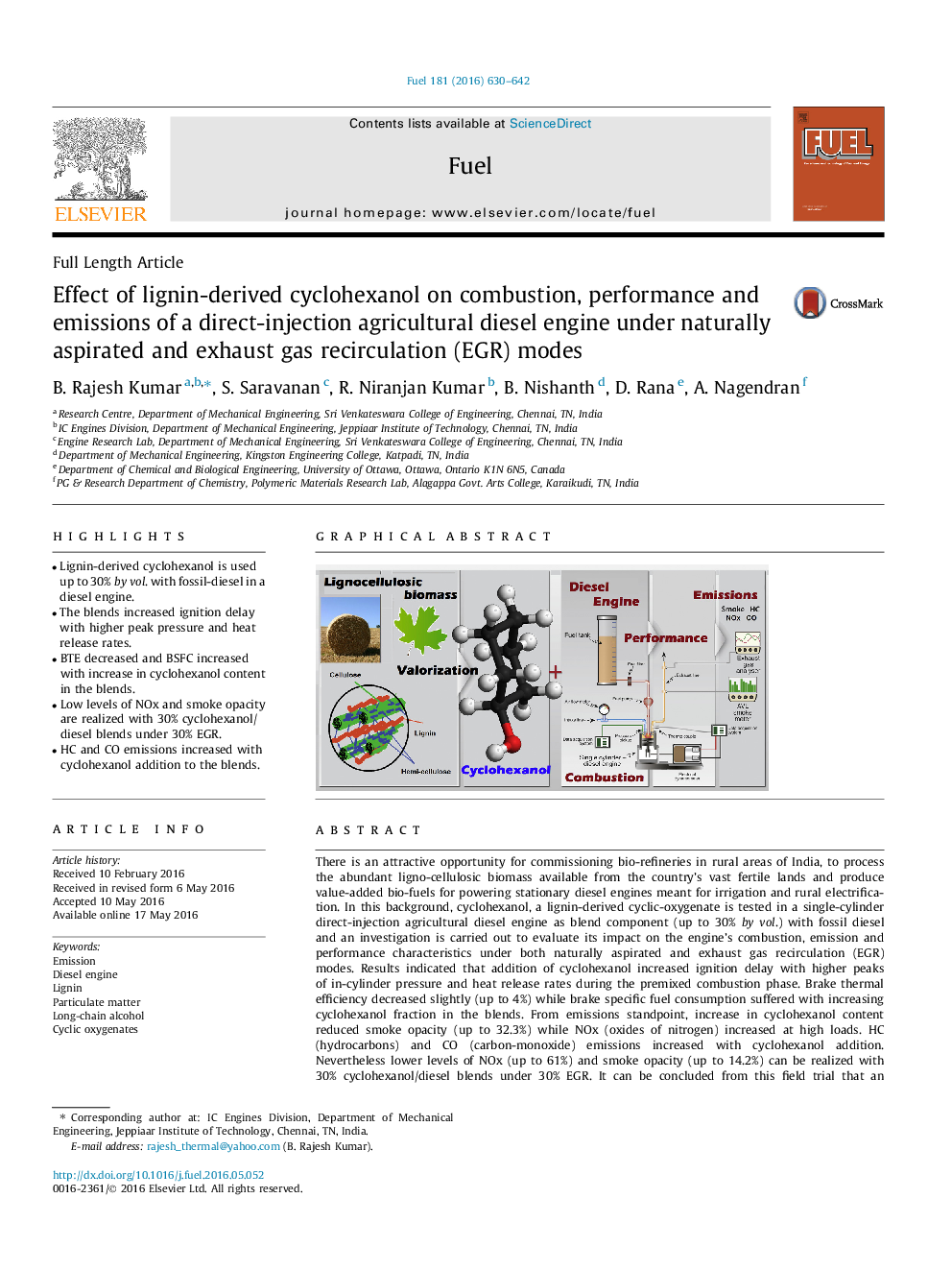| کد مقاله | کد نشریه | سال انتشار | مقاله انگلیسی | نسخه تمام متن |
|---|---|---|---|---|
| 204950 | 461093 | 2016 | 13 صفحه PDF | دانلود رایگان |

• Lignin-derived cyclohexanol is used up to 30% by vol. with fossil-diesel in a diesel engine.
• The blends increased ignition delay with higher peak pressure and heat release rates.
• BTE decreased and BSFC increased with increase in cyclohexanol content in the blends.
• Low levels of NOx and smoke opacity are realized with 30% cyclohexanol/diesel blends under 30% EGR.
• HC and CO emissions increased with cyclohexanol addition to the blends.
There is an attractive opportunity for commissioning bio-refineries in rural areas of India, to process the abundant ligno-cellulosic biomass available from the country’s vast fertile lands and produce value-added bio-fuels for powering stationary diesel engines meant for irrigation and rural electrification. In this background, cyclohexanol, a lignin-derived cyclic-oxygenate is tested in a single-cylinder direct-injection agricultural diesel engine as blend component (up to 30% by vol.) with fossil diesel and an investigation is carried out to evaluate its impact on the engine’s combustion, emission and performance characteristics under both naturally aspirated and exhaust gas recirculation (EGR) modes. Results indicated that addition of cyclohexanol increased ignition delay with higher peaks of in-cylinder pressure and heat release rates during the premixed combustion phase. Brake thermal efficiency decreased slightly (up to 4%) while brake specific fuel consumption suffered with increasing cyclohexanol fraction in the blends. From emissions standpoint, increase in cyclohexanol content reduced smoke opacity (up to 32.3%) while NOx (oxides of nitrogen) increased at high loads. HC (hydrocarbons) and CO (carbon-monoxide) emissions increased with cyclohexanol addition. Nevertheless lower levels of NOx (up to 61%) and smoke opacity (up to 14.2%) can be realized with 30% cyclohexanol/diesel blends under 30% EGR. It can be concluded from this field trial that an agricultural diesel engine, without any modifications, can run successfully with a blend up to 30% cyclohexanol/70% fossil diesel without any damage to the engine parts.
Figure optionsDownload as PowerPoint slide
Journal: Fuel - Volume 181, 1 October 2016, Pages 630–642